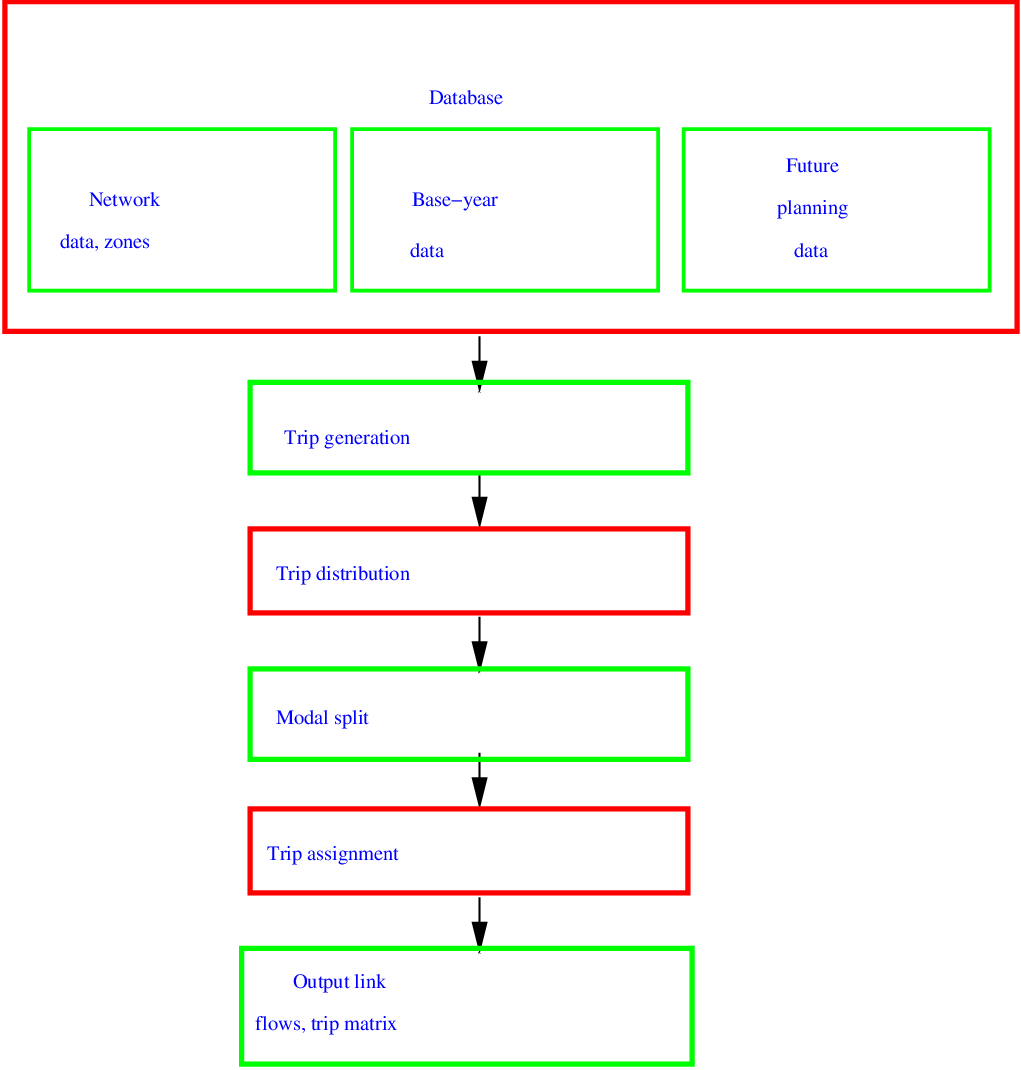
This chapter provides an introduction to travel demand modeling, the most important aspect of transportation planning. First we will discuss about what is modeling, the concept of transport demand and supply, the concept of equilibrium, and the traditional four step demand modeling. We may also point to advance trends in demand modeling.
Modeling is an important part of any large scale decision making process in any system. There are large number of factors that affect the performance of the system. It is not possible for the human brain to keep track of all the player in system and their interactions and interrelationships. Therefore we resort to models which are some simplified, at the same time complex enough to reproduce key relationships of the reality. Modeling could be either physical, symbolic, or mathematical In physical model one would make physical representation of the reality. For example, model air crafts used in wind tunnel is an example of physical models. In symbolic model, complex relations could be represented with the help of symbols. Drawing time-space diagram of vehicle movement is a good example of symbolic models. Mathematical models are the most common type of modeling where with the help of variables, parameters, and equations one could represent highly complex relations. Newton’s equations of motion or Einstein’s equation E = mc2, can be considered as examples of mathematical model. No model is a perfect representation of the reality. The important objective is that models seek to isolate key relationships, and not to replicate the entire structure. Transport modeling is the study of the behavior of individuals in making decisions regarding the provision and use of transport. Therefore, unlike other engineering models, transport modeling tools have evolved from many disciplines like economics, psychology, geography, sociology, and statistics.
The concept of demand and supply are fundamental to economic theory and is widely applied in the field to transport economics. In the area of travel demand and the associated supply of transport infrastructure, the notions of demand and supply could be applied. However, we must be aware of the fact that the transport demand is a derived demand, and not a need in itself. That is, people travel not for the sake of travel, but to participate in activities at various locations
The concept of equilibrium is central to the supply-demand analysis. It is a normal practice to plot the supply and demand curve as a function of cost and the intersection is then plotted as the equilibrium point (Figure ??).
The demand for travel (
Travel demand modeling aims to establish the spatial distribution of travel explicitly by means of an
appropriate system of zones. Modeling of
The general form of the four stage model is given in Figure 2.

The classic model is presented as a sequence of four sub models: trip generation, trip distribution,
modal split, trip assignment. The models starts with defining the study area and dividing
them into a number of zones and considering all the transport network in the system. The
database also include the current (base year) levels of population, economic activity like
employment, shopping space, educational, and leisure facilities of each zone. Then the
The classical model would also be viewed as answering a series of questions (decisions) namely
how many trips are generated, where they are going, on what mode they are going, and finally which
route they are adopting. The current approach is to model these decisions using discrete choice
theory, which allows the lower level choices to be made conditional on higher choices. For example,
route choice is conditional on the mode choice. This hierarchical choices of trip is shown in
Figure
The highest level is to find all the trips
In a nutshell, travel demand modeling aims at explaining where the trips come from, where they go, what mode they choose, and which routes the choose. It provides a zone wise analysis of the trips followed by distribution of the trips, split the trips mode wise based on the choice of the travelers and finally assigns the trips to the network. This process helps to understand the effects of future developments in the transport networks on the trips as well as the influence of the choices of the public on the flows in the network.
I wish to thank several of my students and staff of NPTEL for their contribution in this lecture. I
also appreciate your constructive feedback which may be sent to
Prof. Tom V. Mathew
Department of Civil Engineering
Indian Institute of Technology Bombay, India
____________________________________________________________________________________________
Fri Mar 8 12:42:52 IST 2019